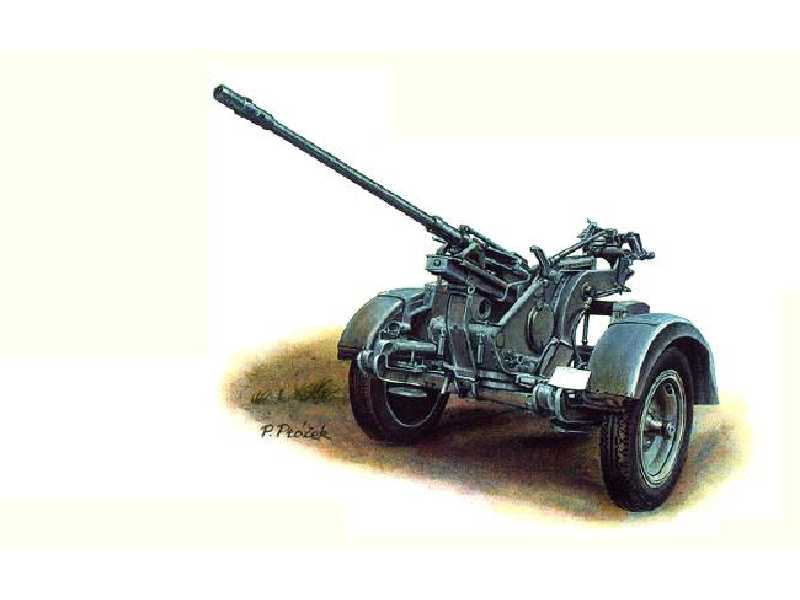



Paints and Glue are not included with any kit unless stated otherwise!
The Germans produced an incredible number of light Fliegerabwehrkanone or "Flak" guns to protect their troops in the field. Light Flak typically consisted of 20mm towed cannons that could be set up quickly around
troop and armoured groups for anti-aricraft protection. These guns were light, fast firing and quite effective against aircraft at low altitudes. They eventually were found all throughout the German held countries to provide protection for
railroads, bridges, towns, important cross-roads and anywhere the Germans felt they needed protection. They made it quite dangerous to fly low over certain areas, such as coast lines in a slow bomber, as they would fire at almost anything
flying in their area.
The 20mm Flak guns were served by four men and were typically towed behind a vehicle. Some were set up in Flak wagons and light tank body. Designed by Rheinmetall, the 2.0cm Flak 30 initially entered production for the
Kriegsmarine in 1934 and was not accepted for service by the Luftwaffe until 1935. The Flak 30 design was that of an oversized machine gun that operated with an open bolt - it was in fact a direct descendant of the MG-30. Ammunition was fed by
box magazine, and the gun's two triggers allowed the crew to fire the gun in single shot or full-automatic mode.
FlaK 30 had seen service in the Spanish Civil War. The 20mm Flak 30 fired a 120-g (4.23 oz) 20-mm HE projectile with a contact detonating fuse. A pyrotechnic relay detonated the projectile after a set time as a safety measure, limiting the effective ceiling to 2,200 m (7,200 ft). The gun's original fire control system used one of two available sights on each gun. One was a complex Zeiss clockwork predictor and a reflecting mirror sight called the Flakvisier (Flak Sight) 35, which required a constant supply of range information from a crewmember operating a portable range finder. The Linealvisier (Linear Sight) 21 was similar, but had gunner's reference markings for specific speeds instead of relying on manual input for that quality. As the war progressed, these cumbersome arrangements were simplified with a basic optical cartwheel sight and corrections based on tracer observation. A typical 20mm Flak 30 detachment consisted of seven men, although fewer men often crewed self-propelled installations. The 20mm Flak 30 remained in use throughout World War II, even though more modern equipment was subsequently adopted.
No carriers available for this product.
The above shipping costs are for 1 item only.
You will see the final shipping costs when you place your order.
@COMMENT_COMMENT@
@COMMENT_COMMENT@

@COMMENT_TITLE@
@COMMENT_COMMENT@